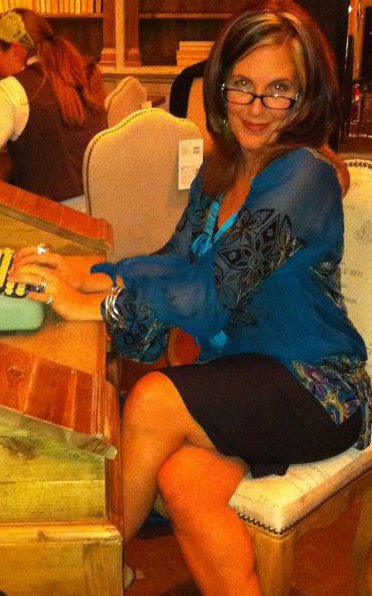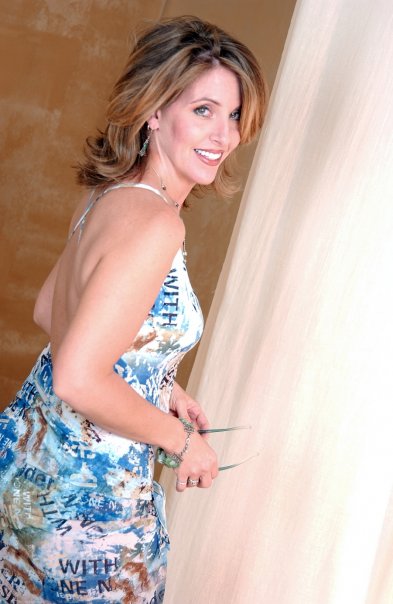Why “what’s next?” has always been such an interesting question
 My fingers hovered over the keyboard, frozen, as if the muscle memory of what key to hit next had suddenly dissipated. It was 2006 and my job as senior editor of a national pregnancy magazine was well and truly over and whether or not I hit the send button, I’d be hustling in a different direction tomorrow. It wasn’t as if I didn’t know this was coming – I’d been warned for months – and it wasn’t as if I wasn’t already freelancing on the side. Was I scared? Sad? Worried? Had my luck finally run out?
My fingers hovered over the keyboard, frozen, as if the muscle memory of what key to hit next had suddenly dissipated. It was 2006 and my job as senior editor of a national pregnancy magazine was well and truly over and whether or not I hit the send button, I’d be hustling in a different direction tomorrow. It wasn’t as if I didn’t know this was coming – I’d been warned for months – and it wasn’t as if I wasn’t already freelancing on the side. Was I scared? Sad? Worried? Had my luck finally run out?
More than three years prior, the magazine had transitioned from an influential online “mom” zone to a national print magazine. The mompreneurs, founders and editors, were fired after the first issue. Which lead to them cajoling and threatening their key writers and editors to follow them or risk never freelancing again. I took my chances with the new regime, hard work and luck leading me to a senior editor position.
The “Madame Editor” years
 As an editor, I thrived. At home with four young kids, hustle was the name of my game. Before sunrise, I reviewed the three issues I was always working on – the one we’d put to bed soon, the one I was receiving content for and the one I’d just begun to assign. After getting the kids off to school, my day was a whirlwind of phone calls with editors, expert sources, writers, advertisers, graphic designers – not to mention the actual editing and writing. I tele-commuted like a boss and owned the paperless workspace before that was even a thing.
As an editor, I thrived. At home with four young kids, hustle was the name of my game. Before sunrise, I reviewed the three issues I was always working on – the one we’d put to bed soon, the one I was receiving content for and the one I’d just begun to assign. After getting the kids off to school, my day was a whirlwind of phone calls with editors, expert sources, writers, advertisers, graphic designers – not to mention the actual editing and writing. I tele-commuted like a boss and owned the paperless workspace before that was even a thing.
Hungry for a taste of everything, I freelanced on the side as well, nurturing a network of opportunities to fill the remainder of my time. My personal essays and articles found homes in newspapers, magazines and journals – one even made it to a Chicken Soup for the Soul book. When the magazine died, my side gigs became my soul focus. I was more a master of diversification than a writer or an editor. I began to teach writing courses online and at a college and gave guest appearances on local TV and radio stations. I even taught creative writing at a women’s prison for a while, which changed me in ways I’m still unraveling. But accepting a job in a “DotCom” start-up was my lucky pivot point, the moment my career path began to lose its amorphous shape and transformation became more exciting than scary.
The “Dotcominatrix” years
During my initial interview at the “Dotcom” I refused the editing test, stating my body of work spoke for itself. My salary, non-negotiable. My expectations, terrifically focused on me, rather than what I could do for the company. In full start-up mode, the “DotCom” snatched me up and we ran together at record speeds – with no HR department to reign in the craziness. My team, like all teams in the company, produced content at staggering speeds and while we worked hard and fast, we played just as hard. Afternoon desk drinking, not a problem. Finger rocket fights on Friday afternoon at 4, game on. Picture a hundred people running between cubicles firing missiles at each other’s heads – even senior management. It was chaotic, heady, fun work. And it was doomed to fail from the start.
 When the “DotCom” crashed a short year later, I stuck around for another year. With no budget to promote my newly-minted web properties, I laser focused on forums and an outcropping of new social media sites. A blog post I put on Digg soared to the top and crashed our servers – my dream and nightmare. Twitter, Myspace, Reddit, Facebook, FoureSquare, Tumbler – and a hundred you’ve never heard of before – became my new hunting ground. I obsessed over newswires and Google trends, publishing timely content at just the moment web attention began to heat up, riding the wave of Internet users hungry for more information. I earned my digital marketing street cred like a gangster, mastering white hat and black hat skills equally, using every weapon in my growing arsenal to push my content one step ahead of the competition.
When the “DotCom” crashed a short year later, I stuck around for another year. With no budget to promote my newly-minted web properties, I laser focused on forums and an outcropping of new social media sites. A blog post I put on Digg soared to the top and crashed our servers – my dream and nightmare. Twitter, Myspace, Reddit, Facebook, FoureSquare, Tumbler – and a hundred you’ve never heard of before – became my new hunting ground. I obsessed over newswires and Google trends, publishing timely content at just the moment web attention began to heat up, riding the wave of Internet users hungry for more information. I earned my digital marketing street cred like a gangster, mastering white hat and black hat skills equally, using every weapon in my growing arsenal to push my content one step ahead of the competition.
But transformation began to worm it’s way in again – especially as the crippled “DotCom” began to sink further into debt. And I began to wonder, could all my writing, leadership and digital marketing skills do more than just inspire people to click a piece of content? I interviewed at a prestigious university, Blackberry and a “Nameless Mattress Manufacturer”. The academic environment intrigued me but an hour’s drive each way would consume too much of my time. Blackberry fascinated me but they were already under fire at this point, their start-up environment souring by the day. The “Nameless Mattress Manufacturer”, not a start-up but growing fast, felt like a place where one person could still make a difference, affect change for coworkers and the company as a whole. The lucky, sweet taste of transformation.
The “Nameless Mattress Company” years
I joined the “Nameless Mattress Manufacturer” a month after the 2009 stock market crash. They were deeply mired in traditional PR and moving them to a digital focus shaved thousands off the budget, setting the tone for my tenure. At an industry event, I overheard two CEO’s discussing this new “social media” and one asked about Serta’s digital game plan. Just watch the “Nameless Mattress Manufacturer” and you’ll see it on Serta – but with a much bigger budget. And it was true, every contest, every piece of content I wrote, every marketing campaign we launched, blew up in scale on Serta’s gargantuan budget. Rewarding yes, but also incredibly frustrating as the “Nameless Mattress Manufacturer” began to crumble under the weight of growing debt.
 But even with the debt and unfocused leadership, we made great strides. We were one of the first mattress manufacturers to sell direct to consumer, looping our retailers into the game with a sweet little kick back at point of sale. I joined a myriad of industry organizations and began to scale my networks, focusing on smaller, more influential groups to help move our message forward to both retailers and consumers. We offered digitally savvy retailers a stage to share their knowledge at events in our showrooms. The buzz on social began to be amplified by the buzz in real life and it made the company look bigger and more profitable at a time when image was everything.
But even with the debt and unfocused leadership, we made great strides. We were one of the first mattress manufacturers to sell direct to consumer, looping our retailers into the game with a sweet little kick back at point of sale. I joined a myriad of industry organizations and began to scale my networks, focusing on smaller, more influential groups to help move our message forward to both retailers and consumers. We offered digitally savvy retailers a stage to share their knowledge at events in our showrooms. The buzz on social began to be amplified by the buzz in real life and it made the company look bigger and more profitable at a time when image was everything.
At the “Nameless Mattress Manufacturer”, we did good stuff together but as budgets got tighter and tighter, our digital community grew more vocal – in ways we hadn’t anticipated. An open forum where vendors, retailers and consumers interacted, the digital space got nasty when payments were late. Really late. In the fall of 2010, when so many retailers lost everything overnight, angry vendors began to post on our digital channels, on my personal digital channels. Phone calls that escalated to screaming matches in seconds unhinged me. And when I turned to the owner for support, I was told I was on my own, he had bigger issues to address than my “stupid social media troubles.”
In times of crisis, your front line person holds your reputation in their hands – and they need you to hold their back, to protect them as fiercely as they protect you. But when a relationship is one-sided, it’s time to move on.
I formed my own digital media consulting company and retailers I’d worked with at the “Nameless Mattress Manufacturer” turned to me to handle their online reputations, to execute strategy and train tactical skills to their staff. I worked closely with a famous sleep doctor, various online networks and even advertising and marketing firms that lacked the digital intel they needed to service their clients in this new environment. My network had grown substantially since my magazine days, social media amplifying it even further, and speaking to groups, large and small, became a regular part of my work world. From serving on organizing committees to emceeing to sharing my digital knowledge, the stage became as familiar to me as my keyboard.
But just because you’re good at something doesn’t always mean it’s a good fit for you.
The next “right” step
As the years wore on – and social media continued to evolve – I began to notice gaps in my enjoyment of this new entrepreneurial world I inhabited. To be able to touch many lives is truly a gift but I found it dissatisfying to swoop in with my big strategies, only to watch them fall apart when I moved onto the next client. After speaking at a furniture industry event on social media crisis management, Restonic entered my life. I worked closely with one of it’s licensees and a couple of months later, as our contract wrapped up, he fed my name up the food chain to the president. Six years and two promotions later, I’m still working with Restonic Mattress Corp, now as Vice President of Brand and Digital Marketing.
 One wrong turn and your days are rife with struggle and frustration. One right turn and you’re enjoying a challenging, rewarding career with people you respect and admire. And whether you’re happy with your choices or not, there will always be corners and off-shoots, forks in the road ahead. When I tell my kids I’m lucky to be where am in life and my career, they scoff at my “false” humility. They see the mountains I’ve climbed and the hard work it took to get there. But hard work isn’t always rewarded and it doesn’t always lead to the next right step – sometimes it just leads to a misstep, a stumble, a wrong turn. While there’s no denying you can’t get ahead without working hard, luck can be your NorthStar, sometimes your albatross.
One wrong turn and your days are rife with struggle and frustration. One right turn and you’re enjoying a challenging, rewarding career with people you respect and admire. And whether you’re happy with your choices or not, there will always be corners and off-shoots, forks in the road ahead. When I tell my kids I’m lucky to be where am in life and my career, they scoff at my “false” humility. They see the mountains I’ve climbed and the hard work it took to get there. But hard work isn’t always rewarded and it doesn’t always lead to the next right step – sometimes it just leads to a misstep, a stumble, a wrong turn. While there’s no denying you can’t get ahead without working hard, luck can be your NorthStar, sometimes your albatross.
The best advice I’ve ever received is from my current boss. Actually he’s given me a lot of great advice over our time together, far too much to ever properly thank him for… At the end of a stressful week of wrong turns and frustrating switchbacks, something he said helped calm the rising tide of anxiety. “If you’re struggling, pay attention only to me. Be like the baseball player up to bat who focuses on the pitcher and the ball he’s holding. The crowd, the noise, the game – none of it matter. Dial everything else down. Breathe. Focus. Swing.”
And he’s right. Luck. Hard work. Good advice. That’s all we need, whether we want to transform, diversify or stay the course.
And who knows, if you’re lucky, if I’m lucky, one of us will actually hit the damn ball. Or climb the next mountain. Choose the metaphor that works best for you and run with it. Just remember to give it everything you’ve got.


Your last paragraph resonates with Me. Work everyday and have a plan in 2020. We met years ago and I remember and witnessed your changes. Way to Grow!
Julia
You are truly one of the hardest working “professionals” I ever had the privilege of working with!